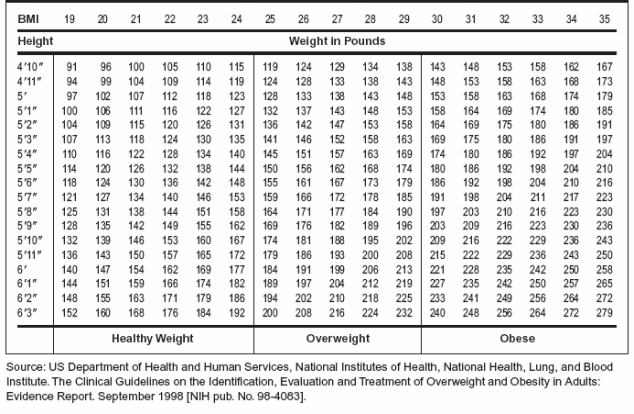- English
- Esta página
- Página inicial
- Arabic (اللغة العربية)
- Chinese (简体中文)
- French (Français)
- Haitian Creole (Kreyòl Ayisyen)
- Hindi (जानकारी)
- Korean (한국어)
- Polish (język polski)
- Portuguese (Português)
- Russian (Русский)
- Spanish (Español)
- Tagalog (Tagalog)
- Ukrainian (Українська)
- Vietnamese (Tiếng Việt)
- All Languages
Español
PDFs by language
Our 24/7 cancer helpline provides information and answers for people dealing with cancer. We can connect you with trained cancer information specialists who will answer questions about a cancer diagnosis and provide guidance and a compassionate ear.
![]()
Chat live online
Select the Live Chat button at the bottom of the page
Our highly trained specialists are available 24/7 via phone and on weekdays can assist through video calls and online chat. We connect patients, caregivers, and family members with essential services and resources at every step of their cancer journey. Ask us how you can get involved and support the fight against cancer. Some of the topics we can assist with include:
- Referrals to patient-related programs or resources
- Donations, website, or event-related assistance
- Tobacco-related topics
- Volunteer opportunities
- Cancer Information
For medical questions, we encourage you to review our information with your doctor.
Find Your Body Mass Index (BMI)
Finding your body mass index, or BMI, is one way to help you figure out if you are at a healthy weight. BMI is a number based on height and weight. It can be used to place a person in categories ranging from underweight to obese.
What is body mass index (BMI)?
Body mass index, or BMI, is one way to look at whether a person is at a healthy weight. BMI is a number based on your weight and height. In general, the higher the number, the more body fat a person has. BMI is often used as a screening tool to decide if your weight might be putting you at risk for health problems such as heart disease, diabetes, and cancer.
BMI is used to broadly define different weight groups in adults 20 years old or older.
- Underweight: BMI is less than 18.5
- Normal weight: BMI is 18.5 to 24.9
- Overweight: BMI is 25 to 29.9
- Obese: BMI is 30 or more
In adults, BMI is calculated the same way for both men and women. There are several ways to find your BMI. (See below for information about how to calculate BMI in children and teens.)
Calculate Your BMI
Enter your height and weight below to find your body mass index (BMI)
Your BMI is
26.5
Underweight
Below 18.5
Normal weight
18.5-24.9
Overweight
25-29.9
Obese
30 and higher
Note: The BMI may not be accurate for people with greater muscle mass (such as athletes) or in older people and others who have lost muscle mass.
Charts are another easy way to find your BMI. To use the table below, find your height on the left side of the chart, then go across to the weight that is closest to yours. At the top of the chart you can see your BMI, and at the bottom of the chart you can see which category you fit into – healthy weight, overweight, or obese:

Some examples:
This table shows us that a woman who is 5 ft. 4 in. tall is considered overweight (BMI is 25 to 29) if she weighs between about 145 and 169 pounds. She is considered obese (BMI is 30 or more) if she is closer to 174 pounds or more.
A man who is 5 ft. 10 in. tall is considered overweight (BMI is 25 to 29) if he weighs between about 174 and 202 pounds, and is obese (BMI is 30 or more) if he is closer to 209 pounds or more.
You can also calculate your own BMI. The actual formula to determine BMI uses metric system measurements: weight in kilograms (kg) divided by height in meters, squared (m2).
When using pounds and inches, the formula needs to be altered slightly. Multiply your weight in pounds by 703. Divide that by your height in inches, squared:
BMI = (your weight in pounds x 703) ÷ (your height in inches x your height in inches)
For example, if you weigh 120 pounds and are 5 ft. 3 in. (63 in.) tall:
BMI = (120 x 703) ÷ (63 x 63) or 84,360 ÷ 3969 = 21.3
This is well within the healthy weight range.
BMI can be calculated the same way for children and teens as it is for adults, but the numbers don’t have the same meaning. This is because the normal amount of body fat changes with age in children and teens, and is different between boys and girls. So for kids, BMI levels that define being normal weight or overweight are based on the child’s age and sex.
To account for this, the US Centers for Disease Control and Prevention (CDC) has developed age- and sex-specific growth charts. These charts are used to translate a BMI number into a percentile based on a child’s sex and age. The percentiles are then used to determine the different weight groups:
- Underweight: less than the 5th percentile
- Normal weight: 5th percentile to less than the 85th percentile
- Overweight: 85th percentile to less than the 95th percentile
- Obese: 95th percentile or higher
An easy way to determine your child’s BMI percentile is to use the CDC’s online BMI percentile calculator at https://www.cdc.gov/healthyweight/bmi/calculator.html.
Limitations and concerns about the use of BMI
Doctors and nurses often use BMI to help find out if a person might have a weight problem. BMI gives a good estimate of total body fat for most people, but it doesn’t work well for everybody. For example:
- Bodybuilders or other very muscular people can have a high BMI because of their muscle mass, even though they’re not necessarily overweight.
- The BMI can also underestimate body fat in people who have lost muscle mass, such as some older people.
For most adults, the BMI is a good way to get an idea of healthy weight ranges. But it’s not always the final word in deciding if a person is overweight or obese. There are other things to think about when judging how much someone should weigh.
A person with a high BMI should be evaluated by a health care provider, who might use other factors such as skinfold thickness (a measure of body fat), waist size, evaluations of diet and family health problems, and other factors to find out if a person’s weight might pose a health risk.
- Written by
- References

The American Cancer Society medical and editorial content team
Our team is made up of doctors and oncology certified nurses with deep knowledge of cancer care as well as journalists, editors, and translators with extensive experience in medical writing.
American Cancer Society. Cancer Prevention & Early Detection Facts & Figures 2019-2020. Atlanta: American Cancer Society; 2019.
Centers for Disease Control and Prevention. About Child and Teen BMI. 2018. Accessed at www.cdc.gov/healthyweight/assessing/bmi/childrens_BMI/about_childrens_BMI.html on June 3, 2020.
Centers for Disease Control and Prevention. Adult Obesity Causes and Consequences. 2018. Accessed at www.cdc.gov/obesity/adult/causes.html on June 3, 2020.
Centers for Disease Control and Prevention. Childhood Overweight and Obesity. 2018. Accessed at www.cdc.gov/obesity/childhood/ on June 3, 2020.
Islami F, Goding Sauer A, Miller KD, et al. Proportion and number of cancer cases and deaths attributable to potentially modifiable risk factors in the United States. CA Cancer J Clin. 2018;68:31-54.
Renehan AG, Tyson M, Egger M, Heller RF, Zwahlen M. Body-mass index and incidence of cancer: A systemic review and meta-analysis of prospective observational studies. Lancet. 2008;371:569-578.
Rock CL, Doyle C, Demark-Wahnefried W, et al. Nutrition and physical activity guidelines for cancer survivors. CA Cancer J Clin. 2012;62(4):242-274.
Rock CL, Thomson C, Gansler T, et al. American Cancer Society guideline for diet and physical activity for cancer prevention. CA Cancer J Clin. 2020;70(4). doi:10.3322/caac.21591. Accessed at https://onlinelibrary.wiley.com/doi/full/10.3322/caac.21591 on June 9, 2020.
World Cancer Research Fund/American Institute for Cancer Research. Diet, Nutrition, Physical Activity, and Cancer: A Global Perspective. Continuous Update Project Expert Report 2018. Accessed at https://www.wcrf.org/dietandcancer on June 3, 2020.
Last Revised: March 5, 2024
American Cancer Society medical information is copyrighted material. For reprint requests, please see our Content Usage Policy.
More Resources
More Interactive Tools
American Cancer Society Emails
Sign up to stay up-to-date with news, valuable information, and ways to get involved with the American Cancer Society.






